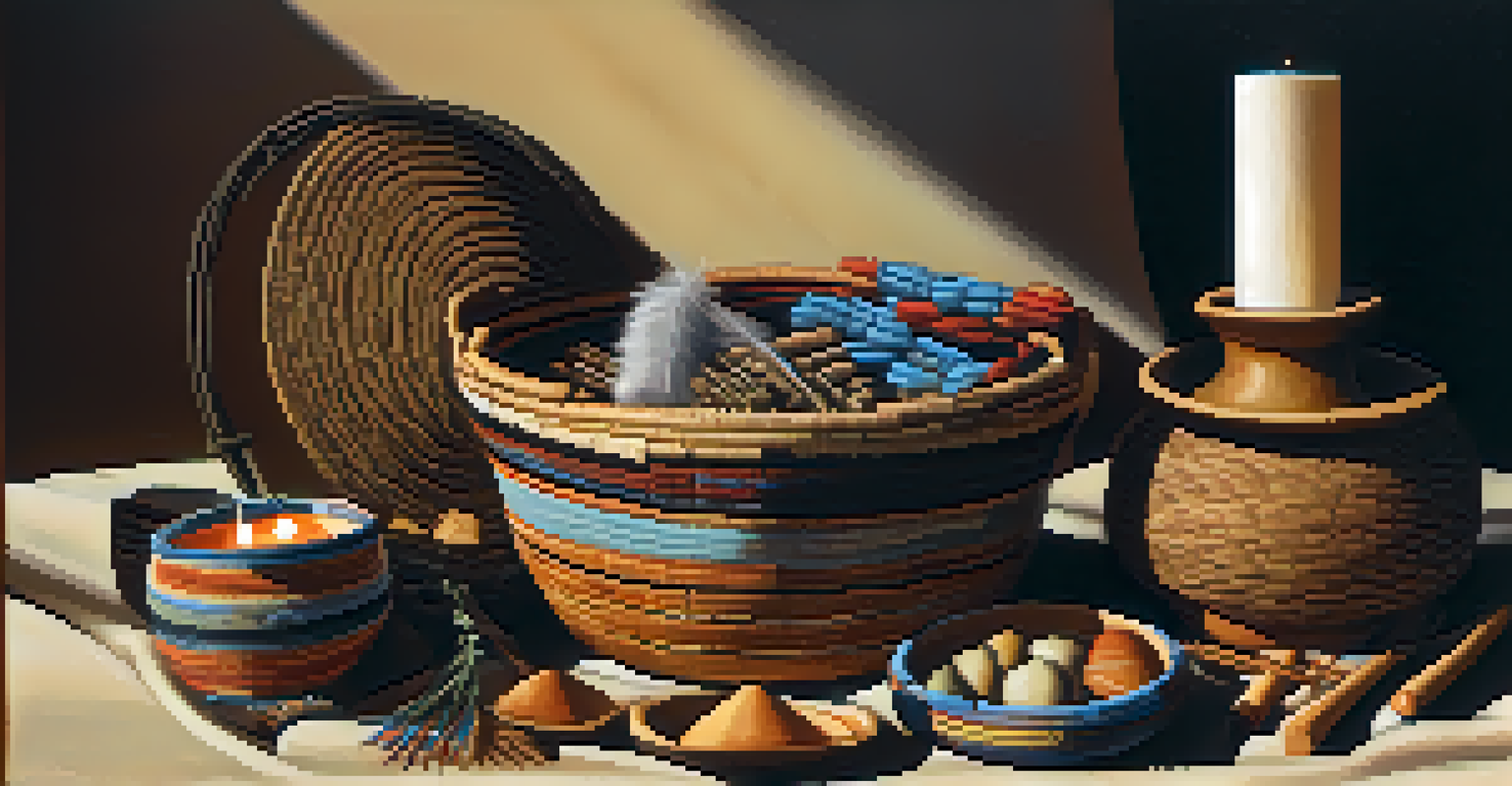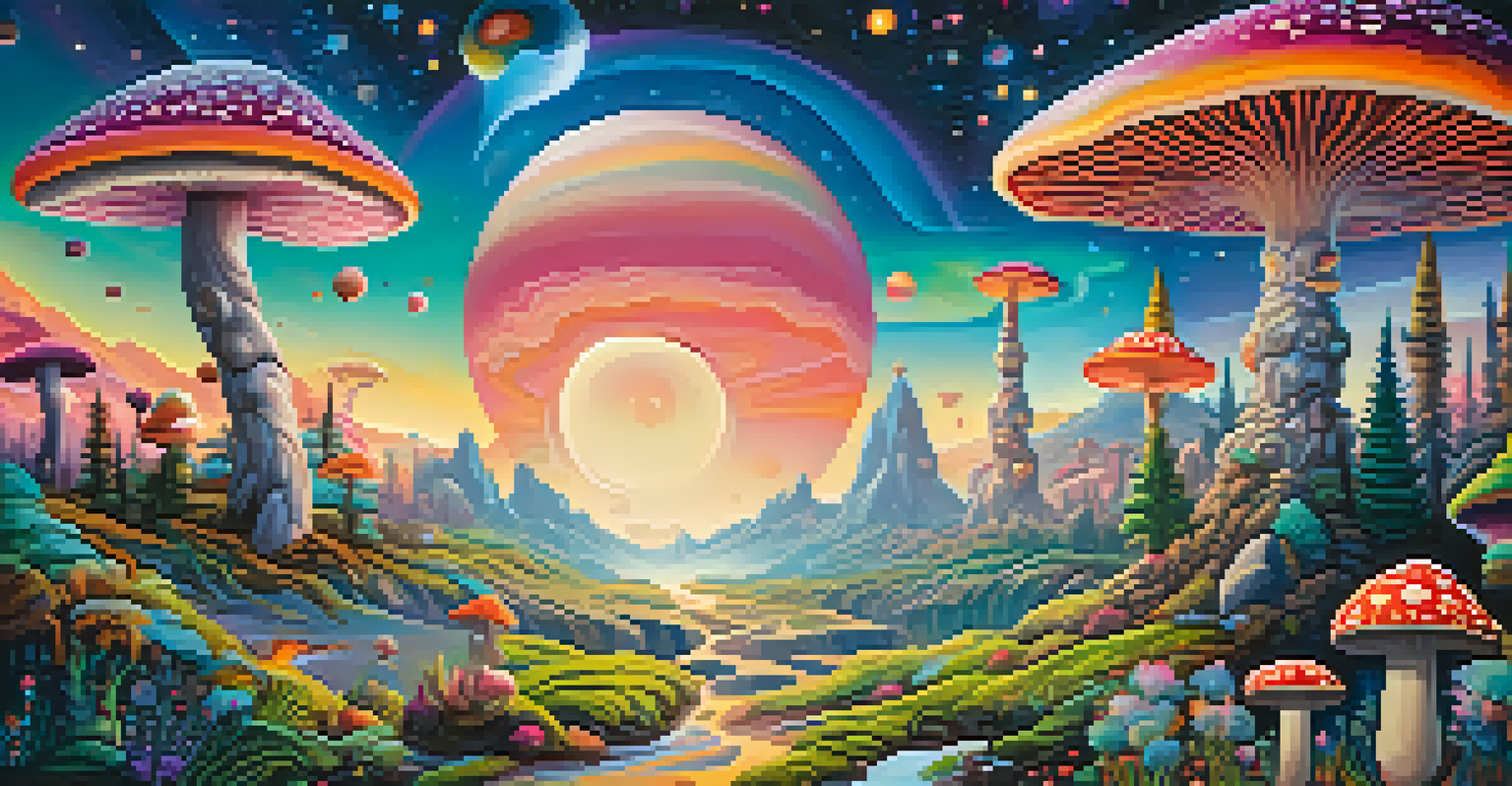Psychedelics vs. Entheogens: Key Differences Explained

Defining Psychedelics: A Closer Look
Psychedelics are substances that alter perception, mood, and various cognitive processes. Common examples include LSD, psilocybin (magic mushrooms), and DMT. These compounds are often used recreationally and for personal exploration, leading users on journeys of self-discovery or altered states of consciousness.
Psychedelics can help us explore the depths of our consciousness and heal emotional wounds that we may not even be aware of.
The primary effects of psychedelics involve visual and auditory hallucinations, as well as profound shifts in thought patterns. While many people report positive experiences, others may face challenging trips that can induce anxiety or paranoia. Understanding these effects is crucial for anyone considering their use.
Research on psychedelics has surged recently, revealing potential therapeutic benefits for conditions like depression and PTSD. This emerging science is reshaping perceptions, paving the way for a broader acceptance of psychedelics in medical and therapeutic settings.
Understanding Entheogens: More Than Just Psychedelics
Entheogens are a subset of psychedelics specifically used in spiritual or religious contexts. The term derives from Greek, meaning 'generating the divine within,' which highlights their purpose in fostering spiritual experiences. Examples include ayahuasca, peyote, and certain strains of mushrooms used in traditional ceremonies.

Unlike general psychedelics, which might be used casually, entheogens often involve guided experiences aimed at deepening one's connection to spirituality or the divine. Participants frequently engage in rituals, enhancing the significance of the experience beyond mere recreation.
Psychedelics vs. Entheogens Defined
Psychedelics alter perception and mood, while entheogens are psychedelics used for spiritual growth.
The intent behind using entheogens is fundamentally different; they are often seen as tools for personal growth, healing, and connection with a higher power. This intention shapes the experience, leading to insights that are deeply personal and transformative.
Key Differences: Intentions and Uses
The primary difference between psychedelics and entheogens lies in the intention behind their use. While psychedelics may be consumed for recreational purposes, entheogens are typically used in a ritualistic or spiritual context. This distinction can significantly influence the nature of the experience and its aftermath.
The use of entheogens in spiritual practice can lead to profound personal transformation and a deeper connection to the universe.
For instance, someone using LSD at a festival may be seeking fun and social interaction, while a person consuming ayahuasca in a shaman-led ceremony is likely looking for spiritual insight or healing. Recognizing these intentions helps clarify the roles these substances play in people's lives.
This difference in purpose also affects how users approach their experiences and integrate them into daily life. While both can lead to profound insights, the path and outcomes of each can vary considerably based on the user's mindset and setting.
Cultural Significance: Roots and Traditions
Both psychedelics and entheogens carry rich cultural histories, but their significance differs across various societies. Psychedelics have often been viewed as modern phenomena, whereas entheogens have deep roots in indigenous cultures. Understanding these backgrounds can enhance our appreciation for these substances.
Entheogens, used in religious ceremonies for centuries, are often seen as sacred tools for connecting with the divine. Cultures like the Native American Church or South American Amazonian tribes incorporate these substances into their spiritual practices, emphasizing their historical and cultural importance.
Cultural and Historical Contexts
Entheogens have deep cultural roots in indigenous practices, while psychedelics are a more modern phenomenon.
Psychedelics, while gaining popularity in contemporary society, lack the same depth of tradition. However, their recent resurgence has sparked interest in creating new cultural narratives around their use, blending modern and ancient practices in exciting ways.
Risks and Benefits: Navigating the Landscape
Both psychedelics and entheogens come with inherent risks and benefits, making informed choices essential. While many users report positive experiences, there are potential dangers, including psychological distress or triggering latent mental health issues. It’s vital to consider these risks before engaging with either substance.
On the beneficial side, research highlights the therapeutic potential of psychedelics in treating mental health conditions. Studies suggest that, when used responsibly, they can lead to breakthroughs in understanding oneself and healing emotional trauma.
Entheogens, too, offer transformative benefits, particularly in spiritual contexts. Many users report life-changing insights and a greater sense of connection to the universe, reinforcing their role as powerful allies in personal growth and healing.
Legal Status: Navigating the Gray Areas
The legal status of both psychedelics and entheogens varies widely around the world, creating a complex landscape for users. Psychedelics like LSD and psilocybin are often classified as illegal substances in many countries, despite their burgeoning therapeutic research.
Entheogens, on the other hand, sometimes enjoy a more lenient legal status, especially when used within religious contexts. For instance, peyote is protected for use by Native American tribes, highlighting how cultural significance can influence legality.
Legal Status and Risks Involved
The legal status of psychedelics and entheogens varies, creating a complex landscape that requires users to be informed.
Navigating these legalities requires awareness and caution. Users must stay informed about local laws to avoid potential legal consequences while engaging with these substances, whether for recreational or spiritual purposes.
Future Perspectives: Evolving Understandings
As research continues to evolve, the distinctions between psychedelics and entheogens are becoming clearer, yet more nuanced. The growing acceptance of psychedelics in therapeutic settings suggests a shift in societal attitudes toward these substances. This evolving perspective may lead to more informed discussions about their uses and benefits.
Moreover, the interest in entheogens for spiritual exploration is gaining traction, leading to increased public awareness and dialogue. This intersection of science and spirituality is an exciting space for further exploration, as people seek meaningful experiences in both realms.

Ultimately, understanding the differences between psychedelics and entheogens can empower individuals to make informed choices. As we continue to explore the potential of these substances, it’s essential to approach them with respect, awareness, and a sense of purpose.